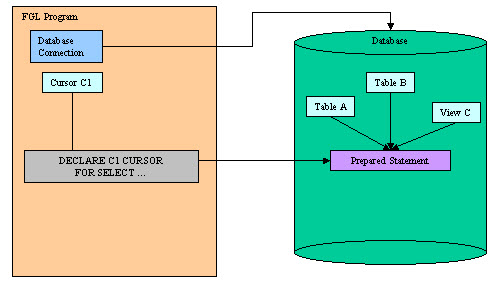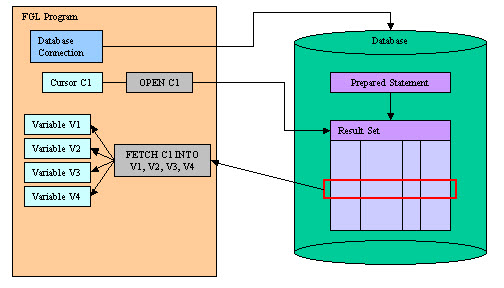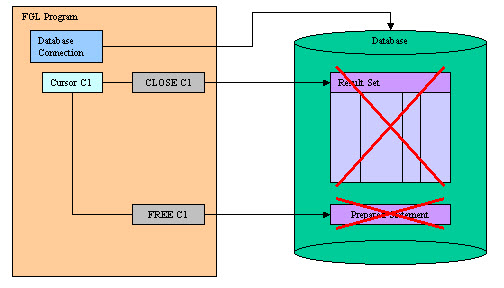Understanding database result sets
This is an introduction to database result sets.
A database result set is a group of rows produced by an SQL statement such as
SELECT. The result set is maintained by the database server. In a program, you
handle a result set with a database cursor.
DECLARE instruction. This instruction sends the SQL statement to the
database server for parsing, validation and to generate the execution plan. 
OPEN instruction. At this point, no data rows are transmitted to the
program. You must use the FETCH
instruction to retrieve data rows from the database server. 
CLOSE the cursor to release the resources allocated for the result set on
the database server. The cursor can be reopened if needed. If the SQL statement is no longer needed,
you can free the resources allocated to statement execution with the FREE instruction. 
The scope of reference of a database cursor is local to a module, so a cursor that was declared in one source file cannot be referenced in a statement in another file.
The language supports sequential cursors and scrollable
cursors. Sequential cursors, which are unidirectional,
are used to retrieve rows for a REPORT,
for example. Scrollable cursors allow you to move backwards
or to an absolute or relative position in the result set. Specify
whether a cursor is scrollable with the SCROLL option
of the DECLARE instruction.
For better code readability, use a FOREACH /
END FOREACH loop, to perform the equivalent of an OPEN +
FETCH (in WHILE loop) + CLOSE.